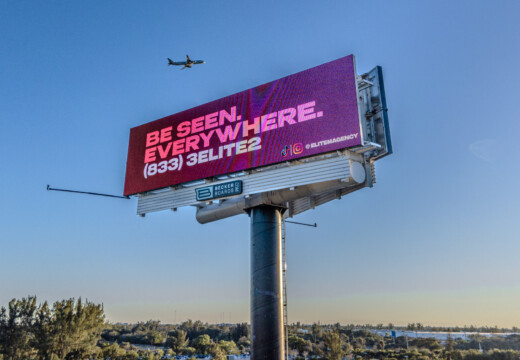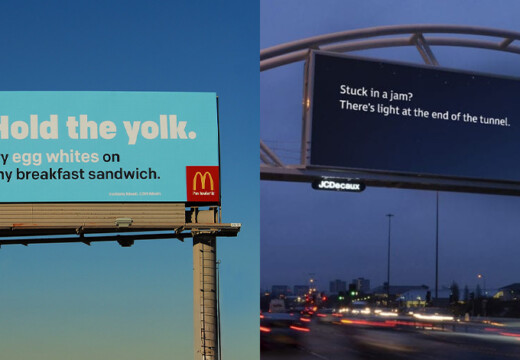Want to make your billboard campaigns more effective? Start by tracking these 5 key metrics:
- Impressions: The number of people who might see your ad. Helps you measure reach and optimize placement.
- Engagement Rate: Tracks how well your billboard drives website visits, social media activity, or other interactions.
- Conversion Rate: Measures specific actions like store visits, purchases, or promo code redemptions tied to your ad.
- Audience Demographics: Ensures you’re targeting the right age, income, and travel patterns for your campaign.
- Cost Per Thousand Impressions (CPM): Evaluates how much you’re spending to reach 1,000 people, helping you maximize your budget.
Why does this matter? These metrics help you improve ROI, target the right audience, and make data-driven decisions. By combining these insights, you can refine your strategy and get better results from your billboard ads.
Can You Measure Billboard ROI? Yes, Here’s How!
1. Impressions
Impressions represent the total number of people who could potentially see your billboard ad. This metric serves as the starting point for evaluating the overall performance of your campaign.
Every impression is an opportunity to connect with a customer. By understanding these numbers, you can:
- Gauge your ad’s reach
- Fine-tune billboard placements
- Measure cost-effectiveness
Real-world examples highlight the importance of impressions. Kimberly Pinkson, owner of Pretty In Pinkston, explains:
"Blip works for us. It’s a different medium, and it brings a lot of exposure. It sets us apart from the rest of the [competition], and that’s what I like".
When reviewing impression data, pay attention to factors like:
- Rush-hour traffic patterns
- Differences between billboard locations
- Seasonal shifts in traffic volume
- Weather’s effect on billboard visibility
Blip provides real-time data from thousands of U.S. locations, helping you target your audience more effectively. Ray Bowens, Founder of Hashtag-Vape, highlights this benefit:
"Billboards are one of the most impactful ways to advertise, and with Blip, you spend a fraction of what you would end up paying elsewhere".
2. Engagement Rate
Engagement rate shows how well your billboard advertising encourages audience interaction. Digital campaigns often track this through website traffic and social media activity.
Key signs of engagement include:
- Increased website traffic during billboard display times
- Social media activity, such as mentions or hashtag usage
To measure engagement effectively, consider these steps:
- Use dedicated tracking URLs for your billboard campaigns.
- Set up Google Analytics segments to monitor traffic during the campaign.
- Keep an eye on social media mentions and activity throughout the campaign.
"Working with Blip has given Mr. Charlie’s the momentum to get our new location on the map while accelerating growth for our original location".
These methods help provide a clearer picture of how your campaign drives audience interaction and sets the stage for evaluating conversions.
sbb-itb-2e2e93f
3. Conversion Rate
Conversion rate shows how well your billboard advertising drives specific actions, like increasing store visits, purchases, or service sign-ups after people see your ad.
Here are some key actions to track:
- More foot traffic during the campaign
- Redemption of billboard-only promo codes
- Submissions on landing pages tied to the campaign
- Calls made to campaign-specific phone numbers
To measure these actions, try these methods:
- Custom landing pages: Use unique URLs on your billboard to track direct website traffic.
- Promo codes: Offer exclusive discount codes to monitor purchases tied to the campaign.
- Call tracking: Set up specific phone numbers for your billboard ads.
- Foot traffic analysis: Compare in-store visits during the campaign to your usual numbers.
These tools will help you understand how viewers respond to your billboard.
"Working with Blip has given Mr. Charlie’s the momentum to get our new location on the map while accelerating growth for our original location."
To get the best results, align your billboard display schedule with your analytics tools. This helps link ad exposure to customer actions. Also, set up tracking windows that account for both immediate reactions and delayed decisions, as billboards can influence people over time.
4. Audience Demographics
Knowing who your audience is helps confirm you’re reaching the right people and ensures your ads are placed effectively. This information works alongside impression and engagement metrics to fine-tune your targeting.
Here are some key demographic factors to consider:
- Age and Income: Determine the age groups and household income levels in your display area.
- Travel Patterns: Monitor traffic volume and peak travel hours.
Blip’s interactive marketplace offers detailed location data, which can reveal when your target audience is most likely to see your ads based on their age and income.
To improve your targeting, focus on:
- Scheduling ads during peak travel times.
- Selecting ad locations that align with your audience’s demographics.
- Crafting messages that resonate with your primary viewer groups.
5. Cost Per Thousand Impressions (CPM)
CPM, or Cost Per Thousand Impressions, is a key metric to evaluate how much you’re spending to reach 1,000 people. It’s a practical way to compare the cost efficiency of various billboard locations.
The formula for CPM is simple:
(Total Campaign Cost ÷ Total Impressions) × 1,000
For example, if you spend $1,000 on a campaign that generates 100,000 impressions, your CPM would be $10. This helps you gauge how efficiently your budget is being used across different campaigns and locations.
Blip makes it easy to track CPM in real time. With its pay-per-play model, you can make informed decisions about where to place your ads. The interactive marketplace lets you monitor CPM daily, helping you optimize your campaign’s performance.
Conclusion
These five metrics are essential for driving success with data-focused billboard campaigns. Here’s how you can put them into action:
- Set Baseline Measurements: Start by identifying your current performance levels for each metric. This helps you track progress and set achievable goals.
- Review Performance Regularly: Conduct weekly reviews to spot trends and make timely adjustments. Consistent monitoring ensures your campaigns stay effective.
- Use the Data to Guide Decisions: Let the metrics shape your strategy. For instance, if specific demographics show higher engagement, refine your targeting to focus on those groups.
When used together, these metrics provide deeper insights. Pairing demographic data with engagement rates, for example, can highlight which audience segments respond best, helping you fine-tune your content and billboard placements.
Each metric plays a specific role, from tracking impressions to assessing cost efficiency through CPM. By staying focused on these core measurements, advertisers can continually improve their outdoor advertising strategies for better results.


